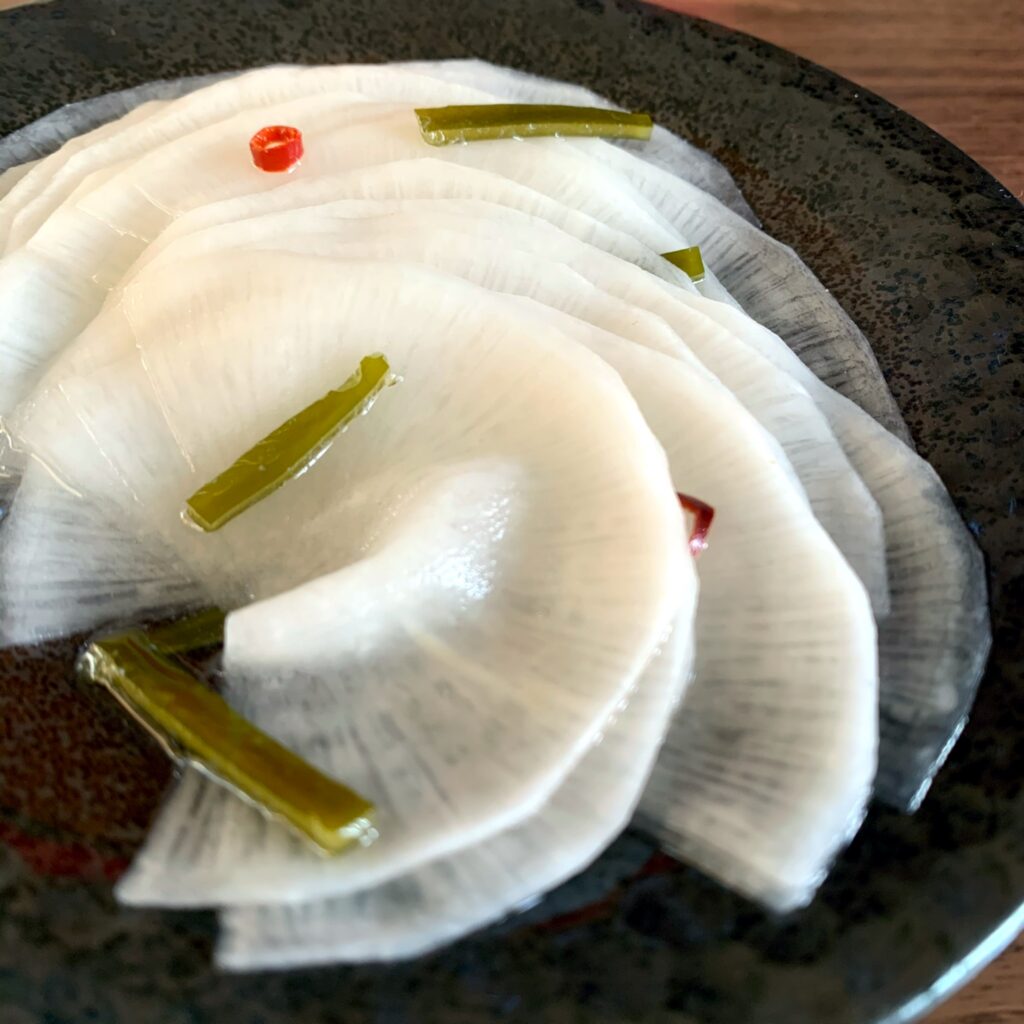
Senmaizuke(千枚漬け)
What kind of dish is Senmaizuke??
Senmaizuke is one of Kyoto’s pickles, and is considered one of Kyoto’s three major pickles along with suguki-zuke and shiba-zuke. Kyo-yasai “Shogoin Turnip(聖護院かぶ)” is often used.
In this recipe, we use easily available daikon radish instead of turnip, which is difficult to find.
senmai = a thousand slices
It is said that this name comes from the fact that the turnip is sliced so thinly that it cannot be counted.
It is difficult to cut a large amount of turnip into 1.3 mm slices, so please use a slicer. Kyocera’s ceramic slicer remains sharp even after many years. I use it habitually.
This marinade has been soaked with kelp, so it is a little sticky but not spoiled.
Traditional Japanese pickles are fermented and can be stored for a long time, but senmaizuke is not fermented. It has a short shelf life, so eat it up within a few days.
Please enjoy the taste of Kyoto in your own home♡*゜
Shogoin turnips are one of the largest turnips in Japan, reaching 2 to 5 kg when grown. The season is from early November to early March. It is mainly produced in Kameoka City, Kyoto Prefecture.In addition to senmaizuke, a dish called ”kaburamushi” is also famous. This dish is made by grating Shogoin turnip, mixing it with meringue, pouring it over eel, and steaming it.
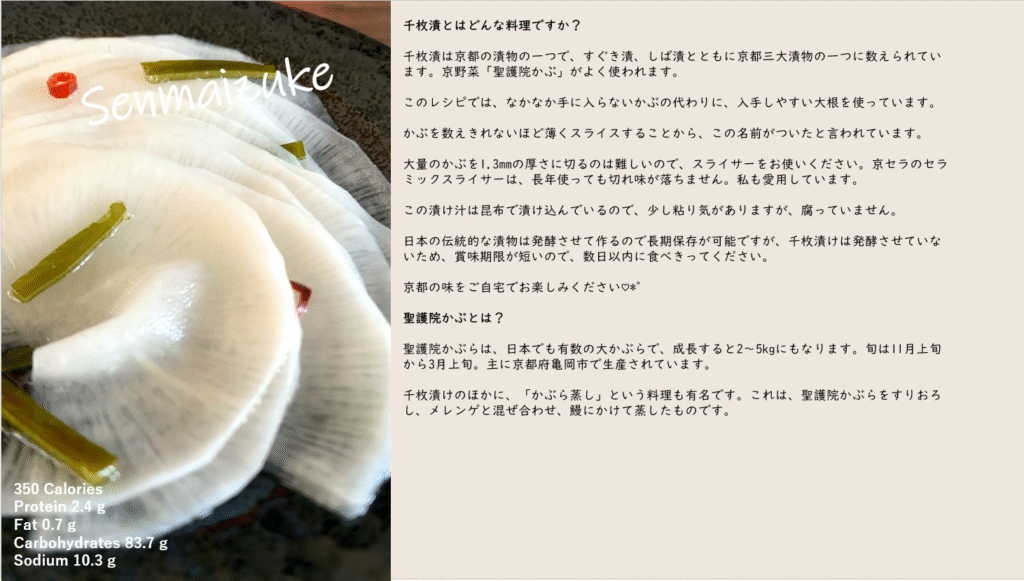
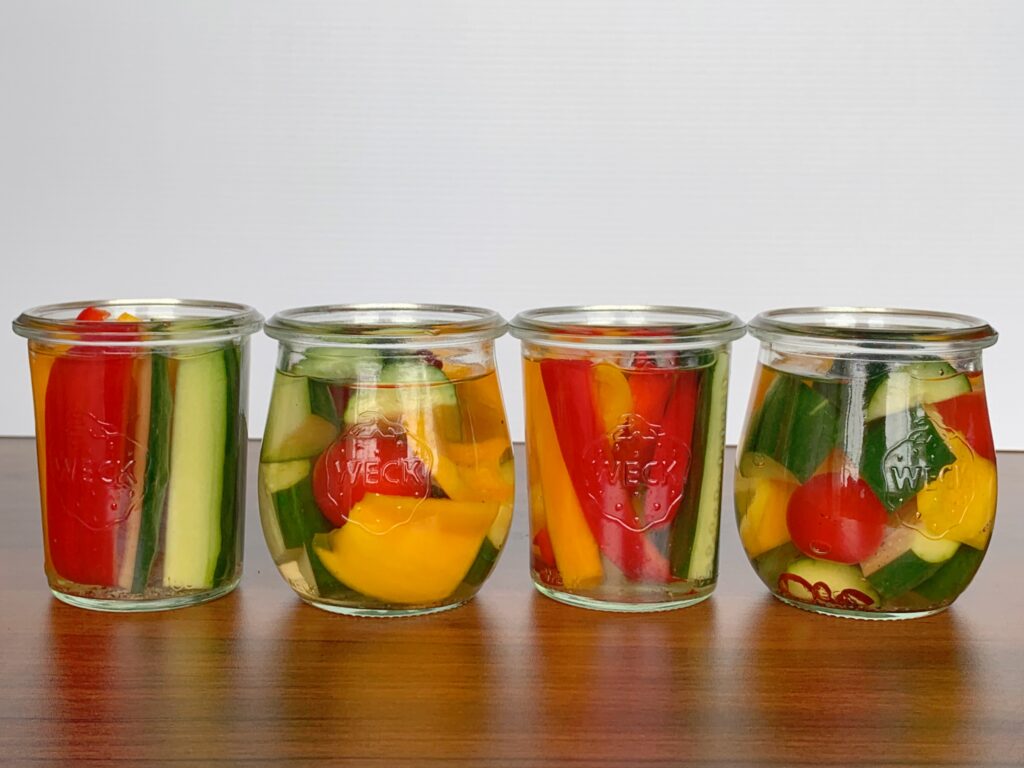
NUTRITION FACTS of Senmaizuke: Traditional radish pickles

Total nutritional value including marinade
350 Calories Protein 2.4 g Total Fat 0.7 g Total Carbohydrates 83.7 g Sodium 10.3 g
INGREDIENTS for Senmaizuke: Traditional radish pickles
- Japanese daikon radish 450g
- Rice vinegar 90g
- Sugar 60g
- Salt 10g
- Kelp 2×6㎝
- Chili pepper moderate amount
Japanese daikon radish is a little spicier than turnip. It also has a slightly harder texture than turnip. For Senmaizuke, use the upper part of the Japanese daikon radish from the middle. The lower the part of the Japanese daikon radish, the less water it contains and the more spicy ingredients it contains.
Grain vinegar is made using multiple ingredients such as rice, corn, wheat, and sake lees. Rice vinegar has a milder acidity than grain vinegar, so we recommend using rice vinegar for senmaizuke. However, considering the cost performance, using grain vinegar is not bad either.
The appropriate amount of salt to use for pickles is around 2% of the total amount of ingredients. Adjust the other ingredients accordingly.
Senmaizuke: Traditional radish pickles COOKING INSTRUCTIONS
- Peel the Japanese daikon radish with a peeler.
- Slice the Japanese daikon radish into 1.3 mm thick slices. (If the daikon radish is large, cut it in half lengthwise.)
- Put the rice vinegar, sugar, and salt in a heat-resistant container and heat in the microwave for 30 seconds. This helps the sugar dissolve more easily and mellows the sourness of the vinegar.
- Wipe the surface of the kelp with a paper towel and cut it to the appropriate size.
- Put all the ingredients in a plastic bag, remove the air, and close it.
- Let it sit in the refrigerator overnight.
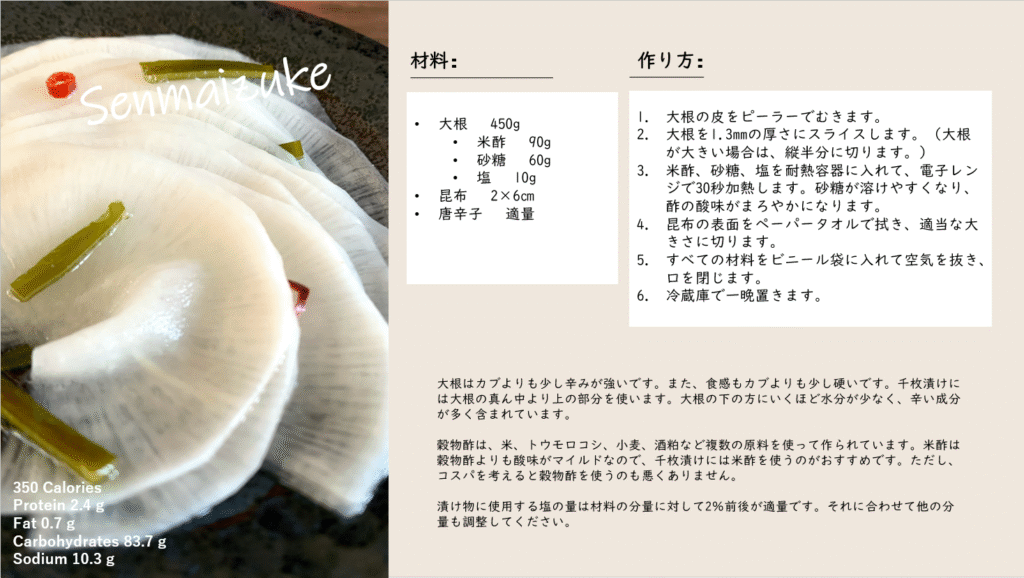
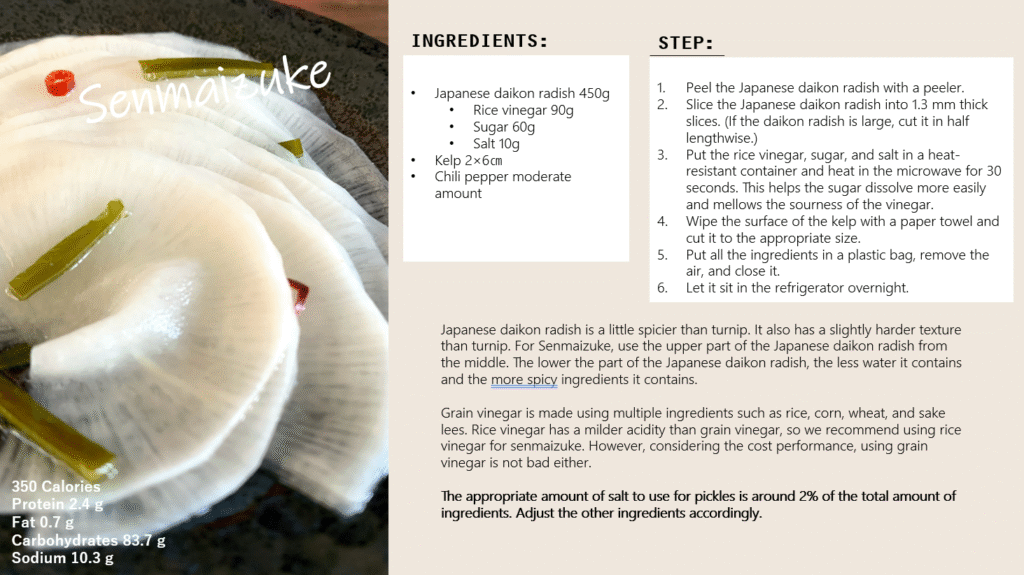
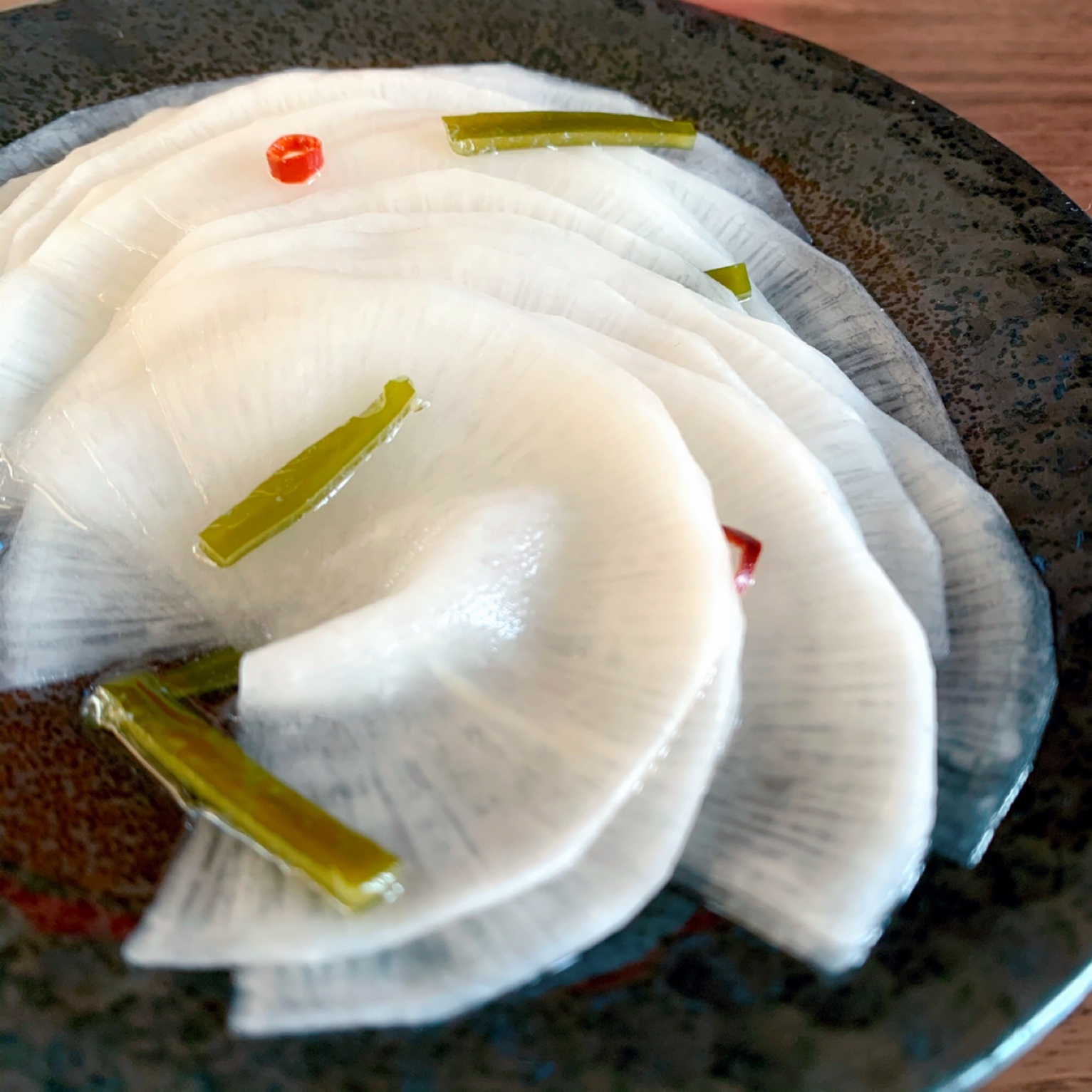
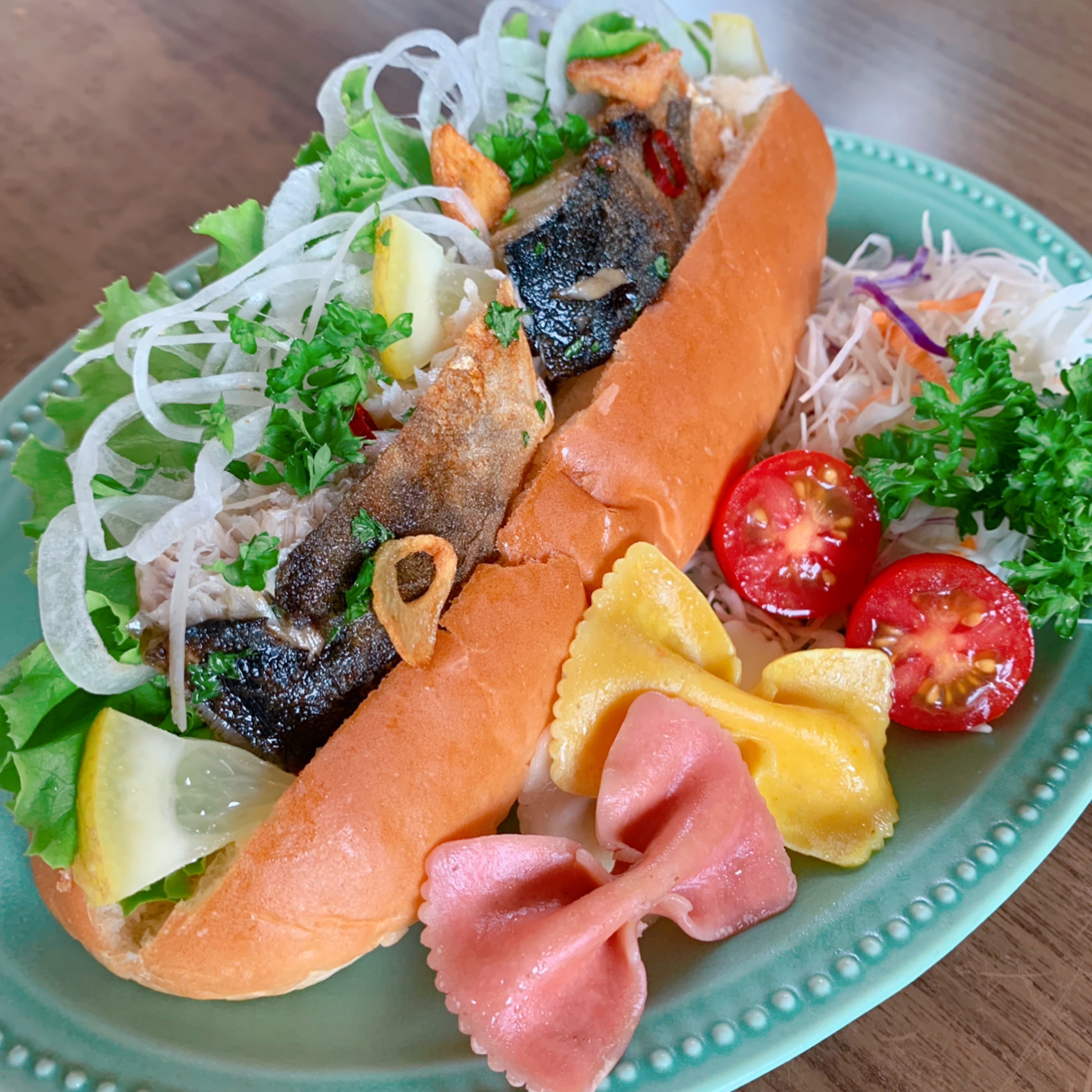
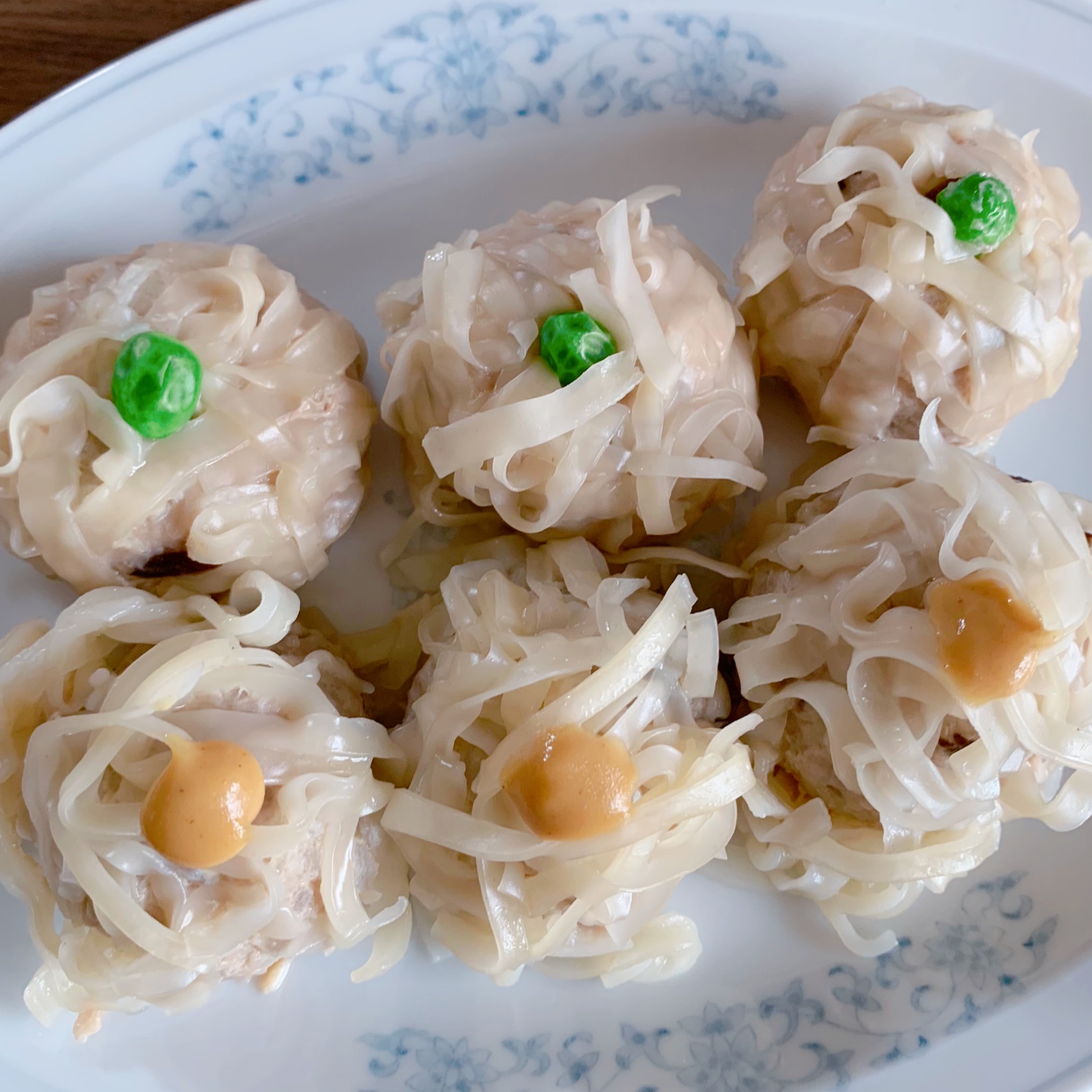
コメント